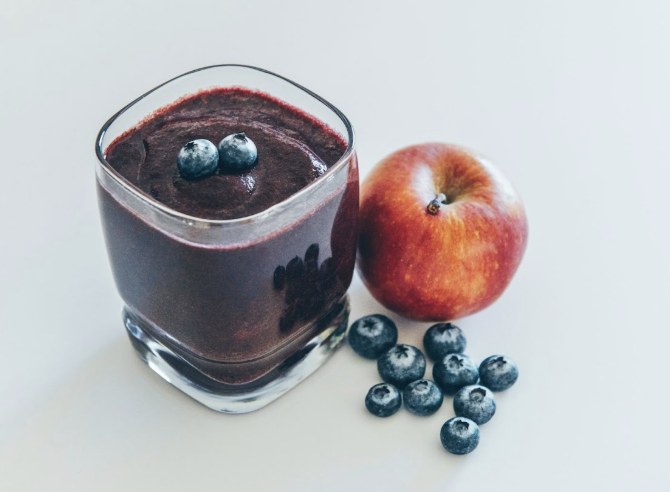Nutrition for IBS: Understanding the Low FODMAP Diet and More
Photo by: Tara Evans
Irritable Bowel Syndrome (IBS) affects millions of people worldwide, and for many, it can feel like a daily struggle with unpredictable digestive symptoms—bloating, gas, abdominal pain, diarrhea, constipation, or both. Fortunately, nutrition plays a powerful role in managing IBS. As a registered dietitian, I often guide clients through strategies to reduce symptoms and regain control of their gut health.
One of the most researched and effective approaches is the Low FODMAP diet, but it’s not the only tool in the toolbox. Let’s break it all down.
What Is the Low FODMAP Diet?
FODMAPs are a group of fermentable carbohydrates that can be poorly absorbed in the small intestine. When they reach the colon, they’re fermented by gut bacteria, producing gas and attracting water—leading to the bloating, discomfort, and irregular bowel movements commonly seen in IBS.
FODMAP stands for:
Fermentable
Oligosaccharides (e.g., fructans in wheat, garlic, onions)
Disaccharides (e.g., lactose in milk)
Monosaccharides (e.g., excess fructose in apples, honey)
Polyols (e.g., sorbitol and mannitol in sugar-free products, stone fruits)
The 3 Phases of the Low FODMAP Diet
This diet isn't meant to be lifelong—it’s a short-term strategy to identify and manage food triggers. The process is broken down into three structured phases:
Elimination Phase (2–6 weeks)
You temporarily remove all high-FODMAP foods from your diet. This gives your gut a break and helps reduce symptoms. Many people feel significantly better during this phase—but the goal is not to stay here forever, as it can be overly restrictive and impact gut diversity.
2. Reintroduction Phase (6–8 weeks)
Here, you systematically reintroduce one FODMAP group at a time (e.g., start with lactose, then test fructans, etc.) while monitoring symptoms. This helps identify which specific types of FODMAPs your body reacts to and in what quantity.
3. Personalization Phase (Ongoing)
Once you know your triggers, you return to a more varied nutritional pattern that includes only the FODMAPs you tolerate well. This phase is essential for long-term gut health, dietary variety, and social flexibility.
Pro tip: Always work with a trained registered dietitian (like us at Katie Chapmon Nutrition!) during this process. The low FODMAP diet is complex, and doing it alone may lead to unnecessary restriction or confusion.
Beyond the Low FODMAP Diet: Additional Nutrition Tips for IBS
While the low FODMAP diet is a cornerstone for many, it’s not the only strategy. Some people benefit more from general digestive health improvements or simpler adjustments.
Focus on Soluble Fiber
If constipation is a key symptom (IBS-C), adding soluble fiber —like oats, chia seeds, and psyllium husk—can help. Insoluble fiber (like bran or raw veggies) may aggravate symptoms in some people, so be cautious.
Eat Regular Meals
Skipping meals or eating large portions can trigger bloating and gut motility issues. Stick to regular, balanced meals and snacks throughout the day. We like to aim for adding nutrition in your day about every 3-4 hours depending on your hunger and fullness cues.
Hydration and Movement
Drink enough water, especially if you increase fiber. Gentle exercise like walking, yoga, or stretching can also promote healthy digestion.
Limit Known Gut Irritants
Watch out for triggers such as:
Caffeine
Alcohol
Spicy or fatty foods
Artificial sweeteners (especially sugar alcohols like sorbitol or xylitol)
IBS is incredibly individual. While the low FODMAP diet has been shown to help around 70% of people with IBS, it’s not the right fit for everyone. The most effective nutrition plan is the one that’s personalized to your symptoms, lifestyle, and food preferences.
As a registered dietitian, I encourage a balanced, evidence-based approach that helps reduce symptoms without overly restricting the joy and variety of eating. If you suspect certain foods are triggering your IBS—or if you feel overwhelmed about where to start—consider working with a dietitian trained in gut health. With the right guidance, symptom relief is absolutely possible.
Interested in learning more about your IBS, we’d love to work with you! Click this link to schedule a complimentary Meet + Greet session. We look forward to finding individualized solutions to fit your needs.
Published: October 6th, 2025
This blog post was written by Amanda Sikkema, a dietitian at Katie Chapmon Nutrition. Amanda works with clients virtually and is accepting new clients.

